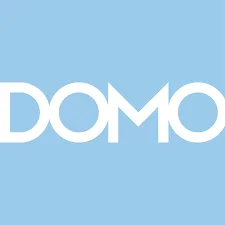Choosing the right analytics tool for your business can feel like navigating through a dense jungle. With a plethora of options out there, it’s easy to get lost. Today, we’re spotlighting two giants in the realm of analytics: Domo and Segment. Both platforms boast robust features designed to empower your decision-making with data. But which one is the best fit for your unique needs? Let’s dive into a detailed comparison, starting with their data integration capabilities, to help you make an informed choice.
| Domo | Segment |
|---|---|
 |  |
| G2 Score – 4.4 out of 5 stars | G2 Score – 4.6 out of 5 stars |
| TrustRadius Score – 8.5/10 | TrustRadius Score – 8.3/10 |
Data Integration: The Gateway to Powerful Analytics
Understanding Data Integration in Analytics
Data integration is essentially the backbone of any analytics tool. It’s about bringing data from various sources together into a single, coherent framework for comprehensive analysis. Imagine trying to understand a complex puzzle; data integration is like having all the pieces on the table, ready to be pieced together.
Domo’s Approach to Data Integration
Domo shines in its ability to integrate data from a vast array of sources. With over 1,000 pre-built connectors, Domo caters to businesses that operate across multiple platforms, from social media analytics to CRM systems. This ease of integration means you can have your data up and running in no time, providing a seamless flow of information across your organization.
One of Domo’s standout features is its drag-and-drop interface, which simplifies the process of data manipulation for non-technical users. This democratization of data means that insights are not just limited to analysts or IT professionals; anyone in your organization can harness the power of data analytics.
Moreover, Domo’s Magic ETL (Extract, Transform, Load) feature allows for the transformation of data without the need for coding. This is particularly beneficial for businesses that may not have extensive IT resources. The ability to easily cleanse, combine, and transform data means that your analytics are always based on the most accurate and relevant information.
Segment’s Take on Data Integration
Segment, on the other hand, focuses on customer data integration. It excels in collecting user interactions from various touchpoints and consolidating them into a unified customer profile. This is invaluable for businesses looking to understand customer behavior across different channels.
With Segment, data collection is streamlined through a single API, which can then be routed to over 300 integrations. This includes analytics tools, email marketing services, and ad platforms. Segment’s emphasis on customer data means it’s particularly suited for businesses focused on improving user experience and personalizing customer interactions.
Segment also offers a feature called Protocols, which ensures data quality by validating, cleansing, and managing data in real time. This is crucial for maintaining the integrity of your data analysis and ensures that decisions are based on reliable data.
Usability and User Experience
The Importance of Usability in Analytics Tools
In the digital age, where data is king, the usability of analytics tools can either empower or hinder your team’s ability to make data-driven decisions. Usability encompasses not just the ease of use but also the user experience (UX) — how intuitive and engaging the tool is for the user. An analytics tool can have all the features in the world, but if it’s not user-friendly, its potential remains untapped.
Domo’s Usability and UX
Domo stands out for its commitment to a user-friendly experience, designed to cater to users of all technical backgrounds. The platform boasts a sleek, intuitive interface that makes navigating through complex data a breeze. Whether you’re generating reports, creating dashboards, or exploring data sets, Domo’s design philosophy ensures that the process is straightforward and stress-free.
One of Domo’s key strengths is its mobile responsiveness. In an era where decisions need to be made on the go, Domo’s mobile app ensures that your data is accessible anywhere, anytime. This is particularly beneficial for executives and team members who need to stay informed but might not always be at their desks.
Domo also offers a range of customization options, allowing users to tailor dashboards and reports to their specific needs. This flexibility means that teams can highlight the most relevant data for their roles, making the analytics process more efficient and effective.
Segment’s Usability and UX
Segment, while focusing on the technical aspect of data integration, also places a high priority on usability. The platform is designed to simplify the often complex process of data collection and integration, making it more accessible to marketers and product managers, not just data scientists.
The interface of Segment is clean and uncluttered, with a clear emphasis on streamlining the user journey from data collection to analysis. The setup process is straightforward, allowing businesses to start collecting and routing data with minimal setup time. This ease of use is a significant advantage for companies looking to quickly leverage customer data for insights.
Segment also provides extensive documentation and community support, ensuring that users have the resources they need to maximize their use of the platform. This focus on supporting the user journey from start to finish enhances the overall user experience, making Segment a strong contender in terms of usability.

Related: Check out our free SEO suite

Reporting and Visualization Capabilities
The Power of Data Visualization
In the vast sea of data analytics, the ability to not just analyze but effectively visualize and report data is what sets great tools apart. Reporting and visualization features enable businesses to transform raw data into actionable insights, communicated in a clear and impactful manner. Let’s compare how Domo and Segment handle this critical aspect of data analytics.
Domo’s Reporting and Visualization Strengths
Domo is renowned for its robust reporting and data visualization capabilities. It offers a wide array of customizable dashboard widgets and visualization tools that can accommodate virtually any data representation need. From simple pie charts to complex scatter plots and custom KPI trackers, Domo provides users with the tools to create visually engaging and informative reports.
One of the key features of Domo is its real-time data visualization capabilities. This allows businesses to monitor their performance metrics and KPIs continuously, making immediate data-driven decisions. Domo’s drag-and-drop interface makes it easy for users to create and customize dashboards without needing extensive technical expertise.
Additionally, Domo’s ability to handle large datasets ensures that even the most data-rich organizations can benefit from its visualization tools without sacrificing performance. The platform also supports collaborative features, allowing teams to share insights and work together on data analysis projects seamlessly.
Segment’s Reporting and Visualization Approach
Segment, primarily focusing on customer data integration, traditionally relied on external tools for advanced reporting and visualization. However, it offers foundational analytics capabilities that allow businesses to understand their customer data through basic reports and charts directly within the platform.
For more complex visualization needs, Segment integrates seamlessly with leading analytics and visualization tools like Google Analytics, Mixpanel, and Looker. This flexibility means that businesses can choose the best tool for their specific reporting needs, leveraging Segment’s powerful data integration capabilities to funnel data into these external platforms.
Segment’s strategy emphasizes the strength of specialization, focusing on what it does best—data integration—while offering the flexibility to pair with specialized reporting tools. This approach can be beneficial for businesses already invested in a specific analytics platform or those with very specific reporting needs that require specialized software.
Customer Support and Community
The Role of Support in Maximizing Analytics Value
In the world of analytics tools, the availability and quality of customer support can significantly impact how effectively a business can use the platform. Support extends beyond troubleshooting; it includes training resources, community forums, and the responsiveness of customer service teams. A strong support system can dramatically enhance the value a business gets from an analytics tool. Let’s see how Domo and Segment stack up in these crucial areas.
Domo’s Support Ecosystem
Domo places a strong emphasis on customer support, offering a comprehensive suite of support services to its users. Clients have access to 24/7 support via phone, email, and a chat system, ensuring that help is always just a few clicks away. This round-the-clock support is crucial for businesses that rely on real-time data analysis and cannot afford downtime.
Beyond reactive support, Domo offers an extensive library of training materials, including Domo University, which provides both free and paid courses designed to help users at all levels enhance their skills with the platform. Whether you’re a new user learning the basics or an advanced user looking to delve into complex data analysis, Domo’s educational resources are designed to support your growth.
Additionally, Domo’s community forum is a vibrant space for users to share insights, ask questions, and collaborate on solutions. This peer-to-peer support network can be invaluable, providing real-world advice and tips from a diverse user base.
Segment’s Approach to Customer Support
Segment also recognizes the importance of strong customer support and offers a variety of resources to assist its users. Segment provides technical support through email and a dedicated knowledge base, with the responsiveness of their support team being generally high. For more complex issues or enterprise-level customers, Segment offers premium support services, including dedicated account management and SLA-backed responses.
The Segment Academy is another key resource, offering tutorials and courses to help users get the most out of the platform. These resources are designed to help businesses efficiently collect, manage, and route their customer data to improve decision-making processes.
Moreover, Segment’s community forum is an active place for users to engage with one another, share best practices, and find solutions to common challenges. This community-driven approach to support enables users to benefit from the collective knowledge and experience of Segment’s wide user base.
Pricing and Cost-Effectiveness
Navigating the Costs of Analytics Tools
In the world of business analytics, understanding the pricing structure and ensuring you’re getting value for your investment is crucial. The cost of analytics tools can vary widely, and it’s not just about the sticker price. We need to consider the total cost of ownership, which includes implementation, training, and any additional fees for support or extra features. Let’s delve into how Domo and Segment stack up in terms of pricing and overall cost-effectiveness.
Domo’s Pricing Structure
Domo is known for its transparent but tiered pricing model, which caters to businesses of different sizes and needs. While specific pricing details are often tailored to the client’s requirements and thus not publicly listed, Domo operates on a subscription model that typically includes an annual fee. This fee scales with the number of users and the breadth of features required.
One of the key advantages of Domo’s pricing model is its scalability. As your business grows, Domo can grow with you, offering more advanced analytics capabilities and support options. However, this scalability means that smaller businesses or those with more modest analytics needs might find the entry price point somewhat prohibitive.
Domo’s pricing also includes access to its extensive range of integrations, support services, and training resources. This comprehensive approach ensures that businesses can maximize their use of the platform, but it’s important to factor in these costs when considering Domo.

Segment’s Pricing Structure
Segment, on the other hand, offers a somewhat different approach to pricing. It provides a unique blend of flexibility and accessibility, starting with a generous free tier designed for smaller businesses or those just starting with analytics. This free tier allows companies to collect data from up to 1,000 monthly tracked users (MTUs), making it an attractive option for startups.
As businesses grow, Segment’s pricing scales accordingly, with various plans that cater to increased data collection needs and more sophisticated features. These plans are based on the number of MTUs and the level of functionality required, ensuring that businesses only pay for what they need.
One potential consideration for Segment is the cost associated with scaling. As your data collection and integration needs grow, the price can increase significantly. This is particularly true for businesses with a large user base or those looking to leverage more advanced features.

Conclusion
In the dynamic world of analytics tools, both Domo and Segment stand out, each with its unique strengths and offerings tailored to different business needs. As we’ve explored, Domo shines as an all-in-one analytics platform, excelling in data integration, usability, pricing scalability, and particularly in reporting and visualization capabilities. It’s designed for businesses seeking a comprehensive, user-friendly solution that can handle vast datasets and provide real-time insights across various organizational roles.
On the other hand, Segment focuses on providing robust customer data integration, making it an invaluable asset for companies aiming to deepen their understanding of customer behaviors across multiple channels. With its flexible pricing model, including a free tier for startups, and its compatibility with a wide array of specialized analytics tools, Segment is particularly suited for businesses prioritizing customer data analysis and looking for a tool that seamlessly integrates with other software.
Read Next:
- How to Use Paid Advertising for Lead Generation
- How to Utilize Facebook Lead Generation Ads: A Deep Dive
- How to Utilize Retention Advertising for Customer Loyalty
- How to Implement Cross-Channel Advertising Strategies
- 31+ Top Social Media Management tools Compared! (2023)






















Comments are closed.